
Kód: 01978651
CMOS Self-Powered Front-End Architecture for Subcutaneous Event-Detector Devices
Autor Jordi Colomer-Farrarons, Pere Lluís Miribel-Catal
A CMOS Self-Powered Front-End Architecture for Subcutaneous Event-Detector Devices presents the conception and prototype realization of a Self-Powered architecture for subcutaneous detector devices. The architecture is designed to ... celý popis
- Jazyk:
 Angličtina
Angličtina - Vazba: Pevná
- Počet stran: 163
Nakladatelství: Springer, 2011
- Více informací o knize

3313 Kč

Skladem u dodavatele v malém množství
Odesíláme za 12-15 dnů
Potřebujete více kusů?Máte-li zájem o více kusů, prověřte, prosím, nejprve dostupnost titulu na naši zákaznické podpoře.
Přidat mezi přání
Mohlo by se vám také líbit
-

Medical Geology
2866 Kč -

Space: 10 Things You Should Know
276 Kč -

People Power
3240 Kč -

Abarat
278 Kč -

Between the Acts and A Room of One's Own
358 Kč -

English for Law Enforcement Student's Book Pack
1138 Kč -

House of Dreams
267 Kč -

Great Britain Mountain Biking
838 Kč -

History of Ancient Geography
1546 Kč -

Social Intelligence and Interaction
2906 Kč -

persona Inmigrante en Situacion Administrativa Irregular -ISAI-
3031 Kč -

Polyreprasentation, Relevanz-Approximation und aktives Lernen im Vektorraummodell des Information-Retrievals
9731 Kč -

Kooperation und Egoismus
2870 Kč -

Reconquista
675 Kč
Dárkový poukaz: Radost zaručena
- Darujte poukaz v libovolné hodnotě a my se postaráme o zbytek.
- Poukaz se vztahuje na celou naši nabídku.
- Elektronický poukaz vytisknete z e-mailu a můžete ihned darovat.
- Platnost poukazu je 12 měsíců od data vystavení.
Více informací o knize CMOS Self-Powered Front-End Architecture for Subcutaneous Event-Detector Devices
Nákupem získáte 331 bodů
 Anotace knihy
Anotace knihy
A CMOS Self-Powered Front-End Architecture for Subcutaneous Event-Detector Devices presents the conception and prototype realization of a Self-Powered architecture for subcutaneous detector devices. The architecture is designed to work as a true/false (event detector) or threshold level alarm of some substances, ions, etc... that are detected through a three-electrodes amperometric BioSensor approach. The device is envisaged as a Low-Power subcutaneous implantable application powered by an inductive link, one emitter antenna at the external side of the skin and the receiver antenna under the skin. §The sensor is controlled with a Potentiostat circuit and then, a post-processing unit detects the desired levels and activates the transmission via a backscattering method by the inductive link. All the instrumentation, except the power module, is implemented in the so called BioChip. Following the idea of the powering link to harvest energy of the magnetic induced link at the implanted device, a Multi-Harvesting Power Chip (MHPC) has been also designed.A CMOS Self-Powered Front-End Architecture for Subcutaneous Event-Detector Devices presents the conception and prototype realization of a Self-Powered architecture for subcutaneous detector devices. The architecture is designed to work as a true/false (event detector) or threshold level alarm of some substances, ions, etc... that are detected through a three-electrodes amperometric BioSensor approach. The device is envisaged as a Low-Power subcutaneous implantable application powered by an inductive link, one emitter antenna at the external side of the skin and the receiver antenna under the skin. §The sensor is controlled with a Potentiostat circuit and then, a post-processing unit detects the desired levels and activates the transmission via a backscattering method by the inductive link. All the instrumentation, except the power module, is implemented in the so called BioChip. Following the idea of the powering link to harvest energy of the magnetic induced link at the implanted device, a Multi-Harvesting Power Chip (MHPC) has been also designed.
 Parametry knihy
Parametry knihy
Zařazení knihy Knihy v angličtině Medicine Nursing & ancillary services Biomedical engineering
3313 Kč
- Plný název: CMOS Self-Powered Front-End Architecture for Subcutaneous Event-Detector Devices
- Podnázev: Three-Electrodes Amperometric Biosensor Approach
- Autor: Jordi Colomer-Farrarons, Pere Lluís Miribel-Catal
- Jazyk:
 Angličtina
Angličtina - Vazba: Pevná
- Počet stran: 163
- EAN: 9789400706859
- ISBN: 9400706855
- ID: 01978651
- Nakladatelství: Springer
- Hmotnost: 940 g
- Rozměry: 235 × 155 × 20 mm
- Datum vydání: 25. February 2011
Oblíbené z jiného soudku
-

Safety Risk Management for Medical Devices
3613 Kč -

The Death of Death
585 Kč -

Ultimate BMAT Guide - 600 Practice Questions
908 Kč -

Corneal Biomechanics and Refractive Surgery
1681 Kč -

Medical Devices
3089 Kč -

Medical Device Guidelines and Regulations Handbook
4267 Kč -
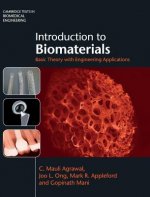
Introduction to Biomaterials
2309 Kč -

Biodesign
2552 Kč -
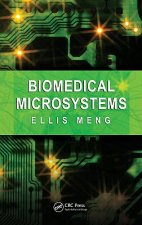
Biomedical Microsystems
4267 Kč -

Comparative Kinesiology of the Human Body
4572 Kč -

Wearable Robotics
6572 Kč -

Analog Electronics for Radiation Detection
2770 Kč -

Biomedical Engineering
2107 Kč -

Cell Culture Technology
1973 Kč -

Organ Tissue Engineering
15128 Kč -
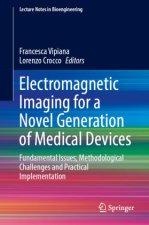
Electromagnetic Imaging for a Novel Generation of Medical Devices
4870 Kč -
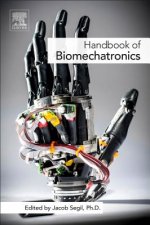
Handbook of Biomechatronics
4596 Kč -

Science and Principles of Biodegradable and Bioresorbable Medical Polymers
8692 Kč -

Novel Biomaterials for Regenerative Medicine
6569 Kč -

Introduction to Clinical Engineering
2691 Kč -

Beginner's Guide to Data Agglomeration and Intelligent Sensing
5593 Kč -

Glucose Monitoring Devices
4288 Kč -

Air-Puff Tonometers
4840 Kč -

Handbook of Low-Level Laser Therapy
12836 Kč -

Polyurea
6450 Kč -

Clinical Engineering Handbook
6572 Kč -

Clinical Kinesiology and Biomechanics
2810 Kč -

Safety Risk Management for Medical Devices
4940 Kč -

Hydrogels for Wound Healing
9014 Kč -

Medical Devices and In Vitro Diagnostics
10840 Kč -

Gellan Gum as a Biomedical Polymer
3380 Kč -
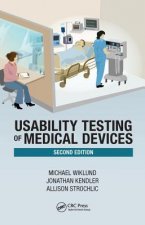
Usability Testing of Medical Devices
6077 Kč -
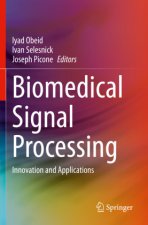
Biomedical Signal Processing
3907 Kč -

Synthetic Polymers in Drug and Biotherapeutics Delivery
5501 Kč -

Artificial Intelligence in Dentistry
5391 Kč -

Artificial Intelligence-Based Brain-Computer Interface
5919 Kč -

Brain Seizure Detection and Classification Using EEG Signals
5593 Kč -
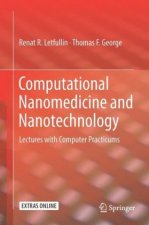
Computational Nanomedicine and Nanotechnology
2810 Kč -

Introduction to Instrumentation and Measurements
6077 Kč -

Neural Network Modeling and Identification of Dynamical Systems
4940 Kč -

Chitosan-Based Nanoparticles for Biomedical Applications
8291 Kč -

Advances in Artificial Intelligence
5830 Kč -

Natural Polymers in Wound Healing and Repair
7876 Kč -

Artificial Pancreas
5593 Kč -
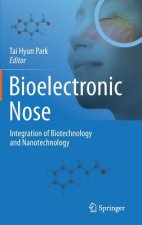
Bioelectronic Nose
5094 Kč -

Functional Nanocomposite Hydrogels
6268 Kč -

Synthetic Biology
2680 Kč -
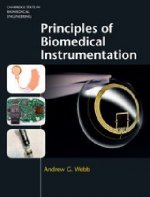
Principles of Biomedical Instrumentation
3023 Kč -

Advances for Prosthetic Technology
2680 Kč
Osobní odběr Praha, Brno a 12903 dalších
Copyright ©2008-24 nejlevnejsi-knihy.cz Všechna práva vyhrazenaSoukromíCookies


 Vrácení do měsíce
Vrácení do měsíce 571 999 099 (8-15.30h)
571 999 099 (8-15.30h)